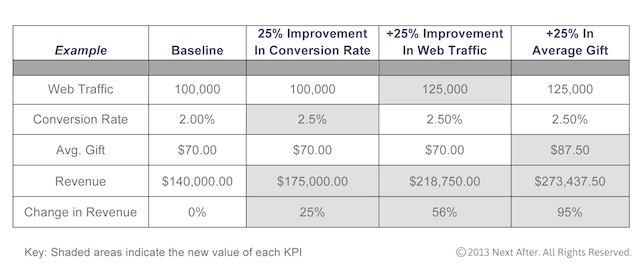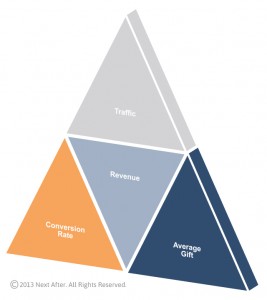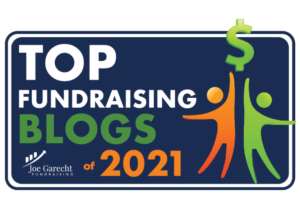Guest post by Dan Gillett, CEO, Kimbia
One of the hottest topics in fundraising is how to leverage online fundraising to raise more money at your nonprofit. Thank you to Dan Gillett from Kimbia for this week’s guest post with some terrific information and three simple ways to impact your online donations.
High donor attrition rates (58.5% per year, according to the 2012 Fundraising Effectiveness Survey Report) force nonprofits to constantly recruit new donors. Fundraising economics have made online channels (web, social, mobile) an important way, in their own right, to acquire and retain new donors across all demographic groups. So, most nonprofits are seeking ways to successfully access the new funds that are moving online each year – estimated to be $13M in 2013.
The good news is that online fundraising does not have to be complex. Just like direct mail, there are three simple ways (indicators) to impact your online donations:
- Website Traffic – who sees your message
- Donation Conversion Rate – response percentage
- Average Gift – how much they give
Managing Key Performance Indicators
You can’t make improvements if you don’t manage outcomes, and you can’t manage what you don’t measure. When managed correctly, even small incremental improvements in each Key Performance Indicator (KPI) can greatly impact the revenue received to support your mission. For example, the third column of the table below shows how a small improvement in the conversion rate (from 2% to 2.5%) increases revenue by 25%.

Ready to get started? Step one is to establish a baseline by reviewing your performance on each indicator using basic web analytics. Step two is to compare your results to industry benchmarks. Don’t worry when you see the results. Most organizations find themselves behind in one or more of the indicators. From here you can start measuring your improvement.
- Web Traffic: This is the foundation of any online program – if no one sees your message, it doesn’t matter what it is. There are a number of basic list building strategies and a number of new channels of outreach available for increasing traffic. Often quality online traffic can be generated through offline means. For example, a coordinated radio or direct response TV campaign with a call-to-action that drives people online could produce a new source of interested prospects. Some of the up-stream sources of online traffic (email campaigns, display ads, social media posts) can be optimized to produce higher click-through rates that translate into more visits.
- Conversion Rate: Once you have successfully attracted potential donors to your site, it’s important to minimize the mental, emotional, and physical friction of the giving process to maximize your results. Often organizations try to provide too much information or ask too many questions of donors who just want to fund the organization’s mission. The key is regular A/B testing of your message and donation form, along with observing and responding to donor behavior. With the right tools, optimizing your results can be done in less than 10 minutes a day.
- Average Gift: Two fairly simple techniques help here 1) working to tie higher donation levels to a stronger mission message and 2) using A/B testing on your ask array (the schedule of giving amounts) to improve the average gift size. Unlike direct mail, online gives you the opportunity to continually refine each aspect of your campaign, including the messaging, ultimate value proposition presentation, ask messaging, and ask array. And again, there are inexpensive tools that can help to do this in less than 10 minutes a day.
Turning Opportunity into Revenue
Significant growth in online giving can be achieved by focusing on these three simple metrics – traffic, conversion rate, and average gift.
If you are highly motivated and excited about getting started, establish your baseline indicators and see what you can do on all three metrics this month. If you are like many overworked, underpaid dedicated nonprofit team members who cannot do it all right now, at least establish your baseline this month and pick one of three key indicators to improve right now. Over the next six months you will be surprised at how one small improvement each month will add up, and ultimately increase the funds available for your mission.
About Dan Gillett: Dan has more than two decades of experience launching, managing, and advising businesses. As Kimbia’s CEO, he leads the development and execution of the company’s corporate strategy. Prior to founding Kimbia, Dan founded and headed a successful, professional advisory services business, served as Senior Vice President and CFO of an early-stage telecommunications company, and worked in various roles with Credit Suisse, PepsiCo and Price Waterhouse. Dan is a director of the Metro Board of the YMCA of Austin. He has an MBA from Harvard Business School and a B.B.A. in Accounting from Harding University.







